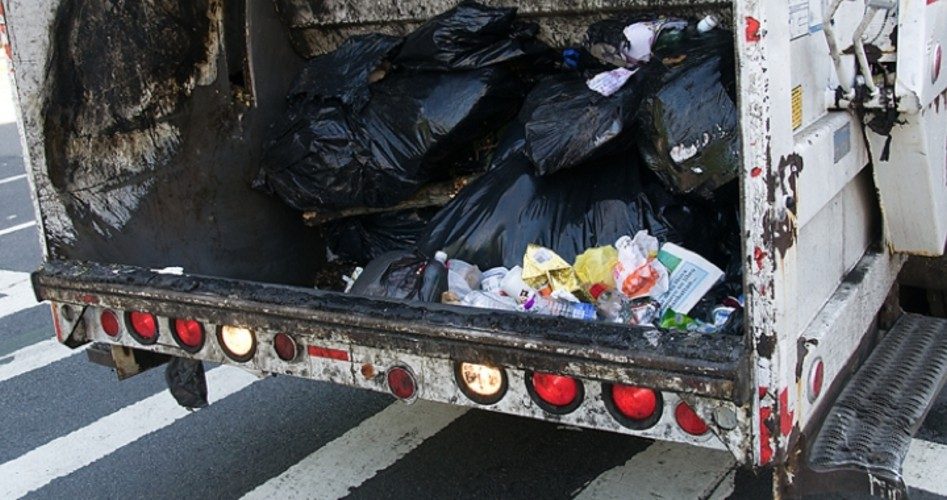
“Obamacare,” Forbes’ Chris Conover observed, “appears to be in a fierce race to beat Cash for Clunkers to become the poster child for mismanagement of federal taxpayer resources.”
The occasion for Conover’s remark is the news that as many as seven state ObamaCare exchange websites either have been or are likely to be shut down in favor of the federal website, Healthcare.gov — a waste of hundreds of millions of taxpayer dollars.
Politico reported that just four of these states — Massachusetts, Oregon, Nevada, and Maryland — have collectively spent $474 million in federal grants with little or nothing to show for it, and some are seeking additional federal funds for one last-ditch attempt at salvaging their websites.
Massachusetts, which enacted the prototype for ObamaCare, has already spent most of its initial $170 million federal grant trying to build a functioning website, and “state officials have warned that most of what is left of their initial federal award may be needed to end their contract with CGI, the vendor that built the” website, according to Politico. The Bay State now wants another $121 million from Washington to build a new website while using Healthcare.gov as a backup. If approved, this would bring the total cost to almost double that of simply scrapping the state website and switching to the federal exchange.
Oregon’s website — “the country’s only one to fail so spectacularly that no resident has been able to sign up for coverage online since it opened early last fall,” in the words of the Washington Post — has already been read its last rites. As The New American reported recently, the Beaver State had already disbursed about $250 million of the $304 million it received in federal grants and would have had to shell out another $80 million even to have a prayer of getting its website working. Since trading in its failed website for the more-or-less functioning Healthcare.gov would cost only about $5 million, the state opted for that approach.
Nevada has thus far poured $51 million of its approximately $90 million in federal grants into creating its website. “An outside report concluded that salvaging the major flaws in the exchange would be a huge feat,” said Politico. Xerox, the vendor that constructed the website, disagrees, but the momentum at present seems to be in the direction of using the federal exchange.
After spending $118 million in federal funds, all Maryland has to show for it is a “fatally crippled” website, wrote Politico. The state wants to switch over to a system similar to Connecticut’s, a move Rep. John Delaney (D-Md.) called a “political cover-up,” but needs federal approval to do so. If such approval is not forthcoming, the Old Line State will also end up on Healthcare.gov.
The other states whose websites are in trouble are Minnesota, Vermont, and Hawaii.
Minnesota, which got $155 million from Washington to set up its exchange, has a variety of problems with its website. The front-end process, whereby an individual can select a plan and determine the amount of subsidy for which he is eligible, proved to be confusing and error-prone. The back-end processes, which transmit information and payments to insurers, “still rely on time-consuming manual processes,” according to the Minneapolis Star Tribune. Last month, the state awarded a $4.95-million contract to Deloitte Consulting to improve the website’s short- and long-term prospects; whether this will work remains to be seen.
Vermont’s exchange “has had repeated failures since it was launched in October 2013,” reported the Manchester Journal, adding that “the system still has significant problems.” CGI, the same vendor that built the disastrous Healthcare.gov, has been given until July 2 to fix the problems with the Green Mountain State’s website, which it also created.
Hawaii, however, may be in the worst shape of all, not just because of website failures but also because of enormous costs. “The rollout of Hawaii’s health exchange was delayed and plagued with technical problems,” wrote the Associated Press — this after spending about $100 million of the $200 million it received from Uncle Sam. The Aloha State has a relatively small population, even fewer of whom were previously uninsured thanks to a 1974 state law requiring employers to provide subsidized health insurance to their employees. As a result, the state has spent nearly $25,000 for each person who enrolled in coverage through its exchange. Hawaii is now seeking federal approval to shut down its exchange and turn its functions over to the state Department of Human Services.
One big problem for all these states is figuring out how to fund their exchanges once the federal gravy train runs out, an event currently scheduled to take place next year. An April House Oversight Committee hearing “highlighted how many of the states still lack a plan to sustain operations in the coming years,” penned Josh Archambault of the Foundation for Government Accountability. “Hawaii was of special note, given that they don’t have any concrete plans for how to finance themselves yet.” (Emphasis in original.) Turning their exchanges over to the feds obviates the need to come up with financing plans.
“The switch from state-based exchanges to Healthcare.gov,” noted the Fiscal Times, “essentially means dumping millions of dollars down the drain to start over.” Phil Kerpen of the Federalist calculates that when all federal grants, not just the money the states claim to have spent, is taken into account, taxpayers have been taken for $1.2 billion for the websites of the seven states in trouble. All told, the federal government has given states nearly $5 billion to operate their exchanges; and, as noted above, more requests for funds are on the way. Then there’s the cost for Healthcare.gov, which was claimed to be $677 million as of last November and is surely considerably higher now.
There are those who argue that all states should switch to the federal exchange because its cost per enrollee ($647) is much lower than that of any of the state exchanges ($1,503 on average). Conover begs to differ:
Yes, there may be some small economies of scale in Exchange operations (just as there are among health insurers). But that does not mean a monopoly Exchange operator is the most efficient/least costly approach, for the same reason it would not make sense to have a single monopoly insurance provider. Competition matters and state-level innovation works best when we let let [sic] the laboratories of democracy learn from one another (as Maryland evidently is learning from Connecticut’s much more successful Exchange).
And, of course, there’s that little matter of the constitutionality of a federal exchange (along with the rest of ObamaCare).
Cash for Clunkers, for all its faults, was at least a limited-time program. ObamaCare, on the other hand, is intended to continue forever, and it is just beginning. There is no question that it will easily outpace Cash for Clunkers — and perhaps almost all other federal programs — in the contest to see which can squander the most cash. But then, as Conover quoted Milton Friedman, “very few people spend other people’s money as carefully as they spend their own.”




